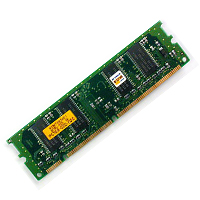Many PC users are starting to see the benefit of upgrading, rather than replacing, a PC system these days, thanks in part to the economic situation but also the increase of tech-savvy users who want to tinker and work on their machine. More information than ever before is now available for those wanting to learn more about computers, especially with the release of smaller systems like the Raspberry Pi. Here, we’ve put together a quick guide to the main components of your PC – and what to look out for if you decide to switch.
Motherboard
Your motherboard is the large circuit board which everything else in your PC plugs into. They generally come in three sizes: Mini ITX, Micro ATX and full ATX – the more you need your PC to do, the bigger the motherboard needs to be. Look at the ports and determine that it has everything you need – Are there enough USB slots? Does it have HDMI input? How about fast Gigabit LAN? The same applies when looking at on-board capability; if you’re only looking to browse the internet and use Office, you can get by with integrated graphics and sound, but if you want to perform any heavy tasks you’ll want to add dedicated cards.
Processor
The processor will determine how quickly your PC can work out information and carry out tasks. They can come with multiple cores, which increase the amount of multitasking your PC can do – dual core and quad-core processors are ideal for high-power gaming machines. Clock speed is also important, as this determines how fast each core works. There are a few heavyweight brands in terms of quality. The two main players are Intel and AMD.
Hard drive
Your hard drive is where you store all of the information on your PC, and therefore should be chosen based on its size, among other factors. They’re relatively cheap, and it’s always easy to add more space, so don’t worry if you can’t afford a few terabytes straight away. You can pick up optical drives for very little money, but for a faster and more hard-wearing option splash out on a solid-state model – those from Western Digital and Samsung are always highly recommended online.
RAM
RAM, or Random Access Memory, can seem like a complicated beast; its job it to access the information stored on the hardrive, after receiving information from the processor – so the more you have, the faster it can work. RAM needs to be compatible with your motherboard to work, both in terms of how many “channels” or slots you can use, and the generation type. It’s not as complex as it sounds; just check your motherboard manual to find the compatibility specs. About 4GB of RAM should be enough for most gaming PCs.
Graphics card
If you’re just upgrading a PC for browsing and watching videos, a graphics card shouldn’t set you back too much, but if you’re setting up a high-power rig you’ll need to do a lot of research. Graphics cards tend to fluctuate in terms of quality, and you need to take into consideration the chipset manufacturer as well as the card manufacturer, as well as whether it has dedicated cooling fans or even its own power supply. For a great resource, check out AnandTech’s benchmarking tool, which compiles reviews for most of the current top graphics cards out there.

